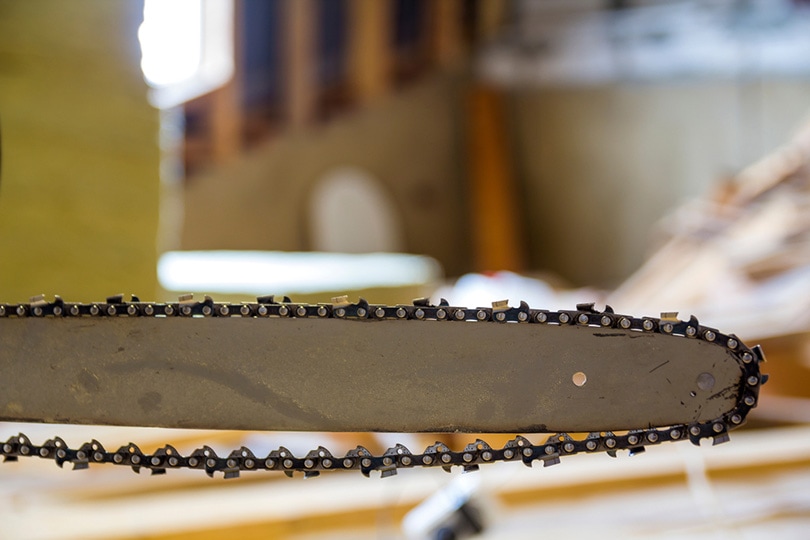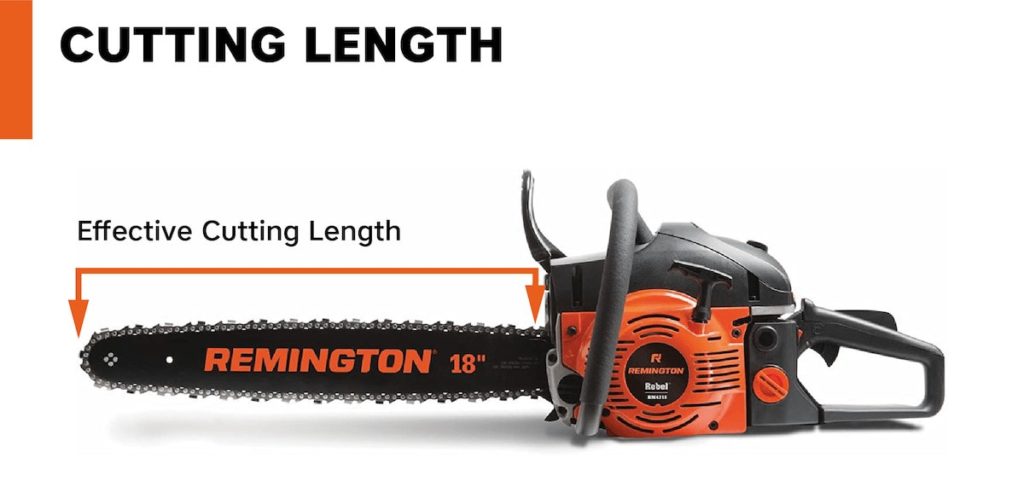How to Measure a Chainsaw Bar: Facts & Tips
-
Pete Ortiz
- Last updated:

The chain on a chainsaw wears out over time, and even with proper sharpening and oiling, you are going to need to replace the chain on occasion. If you are someone who saves all your boxes and manuals, you can look there to see what size you need. Otherwise, you need to measure the bar.
We are going to show you the easiest methods for measuring the bar and for determining the required length of the chain. We will cover bar and chain measurements, the difference between true length and cutting length, pitch, rivets, links, and more, to help you replace your chainsaw bar or chain.
The Bar
The bar is often called the blade, and it is the long flat piece of metal that the chain moves over as it makes cuts. A longer bar will require more power from the motor, so you will notice budget saws have shorter bars because they use motors with less power.
Electric chainsaws rarely go over 18 inches long, and many battery-powered units will be less than that.
You will need to check your owner’s manual to find out the maximum length bar you can use with your saw. Only one size chain will fit on the bar. You cannot add or remove links like you can with other types of chains.
Effective Cutting Length
The effective cutting length is also known as the called length. Effective cutting length measures the distance between the tip of the bar and where it attaches to the saw. To get this measurement, take a tape measure or yardstick place it at the base of the blade, and measure the distance to the tip.
It’s common for the measurement not to fall at an exact whole number, so you round it off to the NEXT EVEN NUMBER to get your effective cutting length.
- If you measured 17¼ inches, you have an 18-inch effective cutting length
- If you measured 18¼ inches, you have a 20-inch effective cutting length
True Length
True length is the actual length of the bar, taken from end to end before its installed. If you didn’t get this measurement before you installed the bar, you would need to remove it by undoing the bolts that hold it in place. The bolts are placed just beyond the base of the bar.
With the bar removed, place it on a flat surface and use a tape measure or yardstick to get the measurement. Unlike effective cutting length, you do not round off any numbers.
Consider an Upgrade
If your saw is old and requires a chain as well as a new bar (or more) you may find it economical to buy a new chainsaw. It’s not the purpose of this article to sell chainsaws, but many modern brands are coming down in price, and a new one might not cost much more than the replacement parts for your old one. Battery power is much more useful than it was even a few years ago, and corded saws are very lightweight and often extremely inexpensive.
Replacing the Bar
Once you have the effective cutting length as well as the true length of the bar, you only need to match up the two numbers for a perfect fit.
- Includes one Husqvarna FT20 20-Inch Chainsaw Bar for the Husqvarna 460 Rancher and Husqvarna 455 Rancher, plus older models: 55...
- Low Kickback and Good Cutting Control: The gentle curve and small nose radius of this small mount chainsaw guide bar reduce the risk of...
- Precision Chainsaw Accessories: 20 inch chainsaw bar features a 3/8" pitch, .050" gauge and 72 drive links
Measuring the Chain Length
Measuring the chain is more complex than measuring the bar, and it requires you to take and match two main measurements: pitch, and gauge.
Count the Drive Links
To take the first measurement, you will need to count the number of links from end to end. This measurement may seem strange to many people, but it affects the way the chain goes around bends at the tip and base. If the chain has the wrong number of links, it will not move across the bar smoothly, and it could get jammed up in the base.
Pitch
Pitch is the distance between drive links in your chain. To get this measurement, you need to measure the distance between any three consecutive rivets, then divide that number by two. Common pitch values include 3/8, 3/8 low profile, and ¼-inch, but many other values are possible.
Gauge
Gauge is the measurement of the groove that keeps the chain on the bar as it cuts. There are several common gauges, including .043, .050, .058, and .063-inch, so you’ll need to know what yours is before making a purchase. You can use a tape measure or ruler to measure the gauge, or you can also use a penny, dime, or quarter if you have the most common gauges.
- If the penny fits snug without force, you are looking for a .043 gauge
- If the dime fits snug without force, you are looking for a .058 gauge
- If the quarter fits snug without force, you are looking for a .063 gauge
Making it Easy
Most brands put the information you need right on the bar for you. You can see it by removing the cover that hides the end of the bar. If you measured the bar earlier in this guide, you have likely seen numbers printed on it.
You only need to match up these numbers with the number on your package, and for a perfect fitting chain.
Never Estimate
You should always take the time to get the measurements you need and never estimate or guess at the measurements. Besides wasting money and dealing with frustrating returns, you can permanently damage your saw and injure yourself.
Proper Maintenance Reduces Wear
Keeping the chain well-oiled while you are working is vital to its longevity. If your saw has an automatic oiling mechanism, make sure you never let it run dry. If you do not have a saw with the automatic oiling system, we recommend frequently stopping to oil it until you can upgrade to one that does. Most modern saws have an oiling mechanism and will improve your work experience in other ways as well. These brands have better fuel efficiency, anti-vibration, and anti-kickback mechanisms, quick-stop blades, and more.

Conclusion
If you only need to change the chain, we recommend removing the cover at the base of the bar and checking it for the number of links, pitch, and gauge of the chain you need. If the numbers are not present on the bar, you will need to measure it by following this guide.
If you want to change the bar, you will need to complete the measurement unless you have the owner’s manual or can look your brand up online.
We hope you have enjoyed reading this short guide, and It has helped you get the part you need. If you have found it informative, please share this guide to measuring a chainsaw bar on Facebook and Twitter.
Related Reads:
- HOW TO CLEAN A PAINT SPRAYER AFTER USE
- HOW TO PAINT SPRAY YOUR CAR LIKE A PRO
- HOW TO USE A PAINT SPRAYER WITH AN AIR COMPRESSOR (6 EASY STEPS)
Featured Image Credit: Bilanol, Shutterstock
Contents









